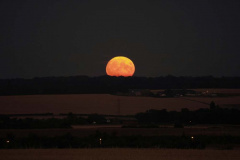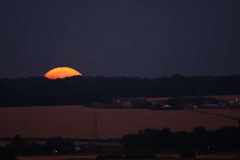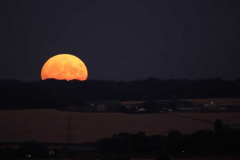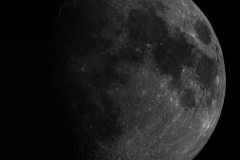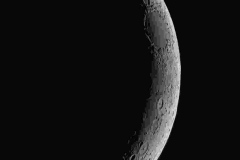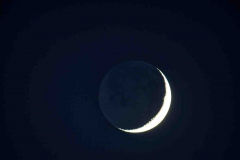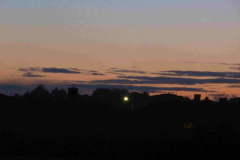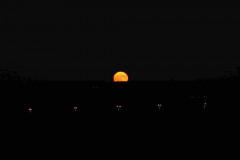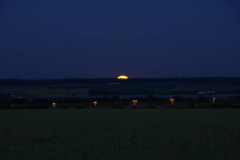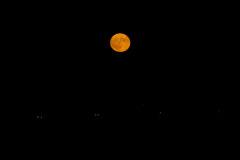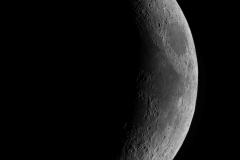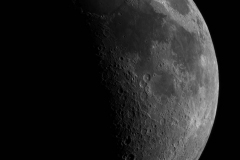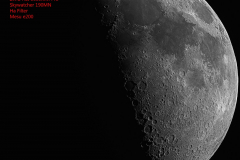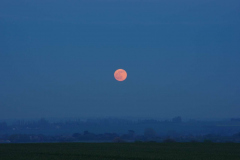Observing the Moon
The Moons seems such an obvious object but there is much to be observed, with just your mark 1 eyeball try observing the different phases, the order they occur and the time of day best to observe them. Look for the highlands and seas and see if you can spot the wobble of the moon (libration).
However if you have a telescope try observing the Lunar 100, or imaging the Moon’s features.
BAA Lunar Section | Wikipedia Entry
Recommended Filters
Neutral Density (ND) filters to remove the glare
Fringe Killer to remove any colour cast from refractor telescopes.
Imaging Filters:
IR Pass filter to improve the seeing.
The Sun & Full Moon – 3rd Jan 2026
The 3rd of Jan 2026 saw the 1st Full Moon of the year and several members got out their scopes and cameras and took some lovely images of the Moon. Some members also took the opportunity to image the Sun that day too.

Sun & Full Moon by Honor Wheeler.
Taken using a Dwarf3 smart scope taken from Dartford.

The Sun by George Buckberry.
Taken using a Dwarf3 smart scope taken from Hextable.
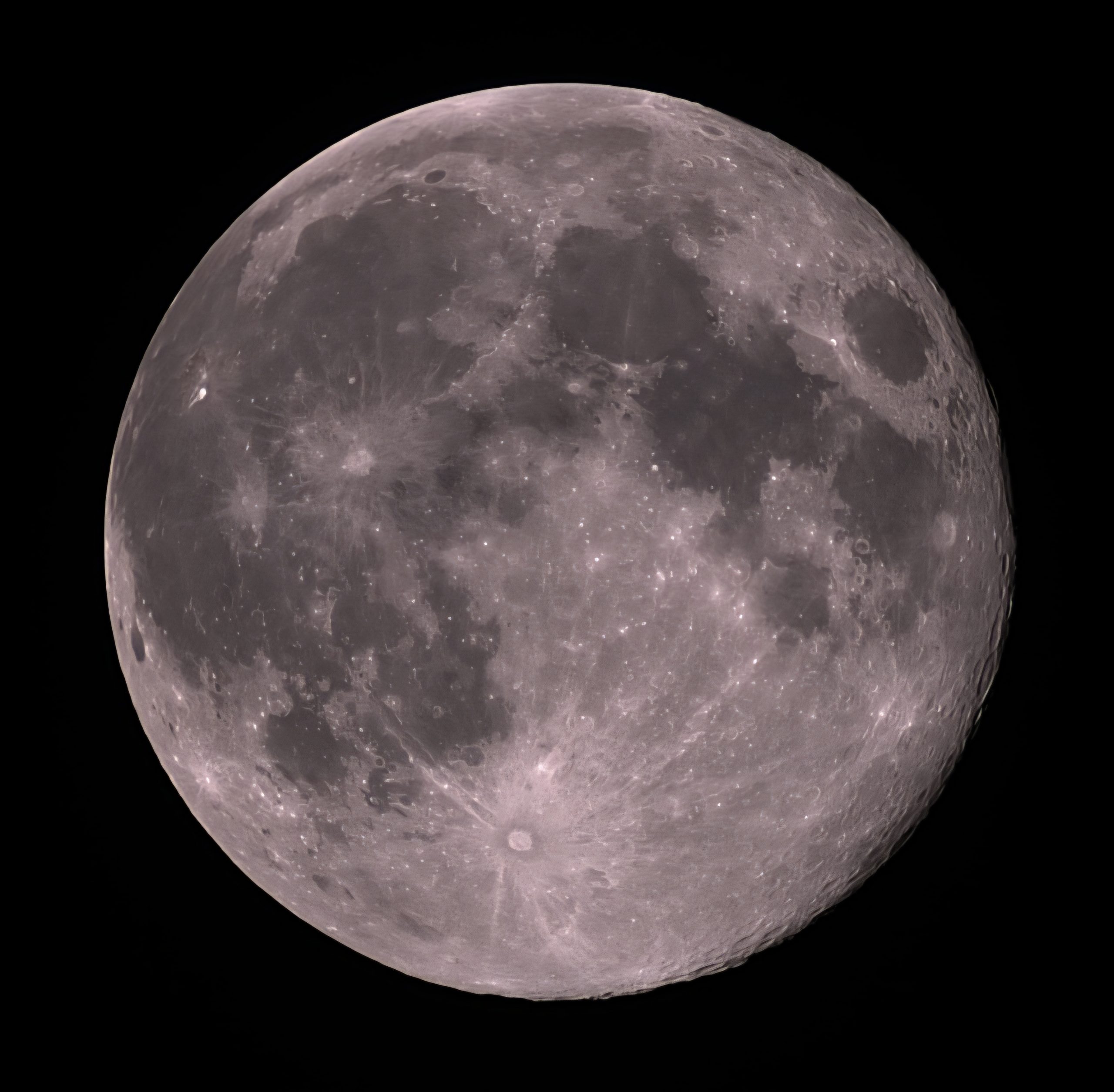
The Full Moon by George Buckberry.
Taken using a Dwarf3 smart scope taken from Hextable.
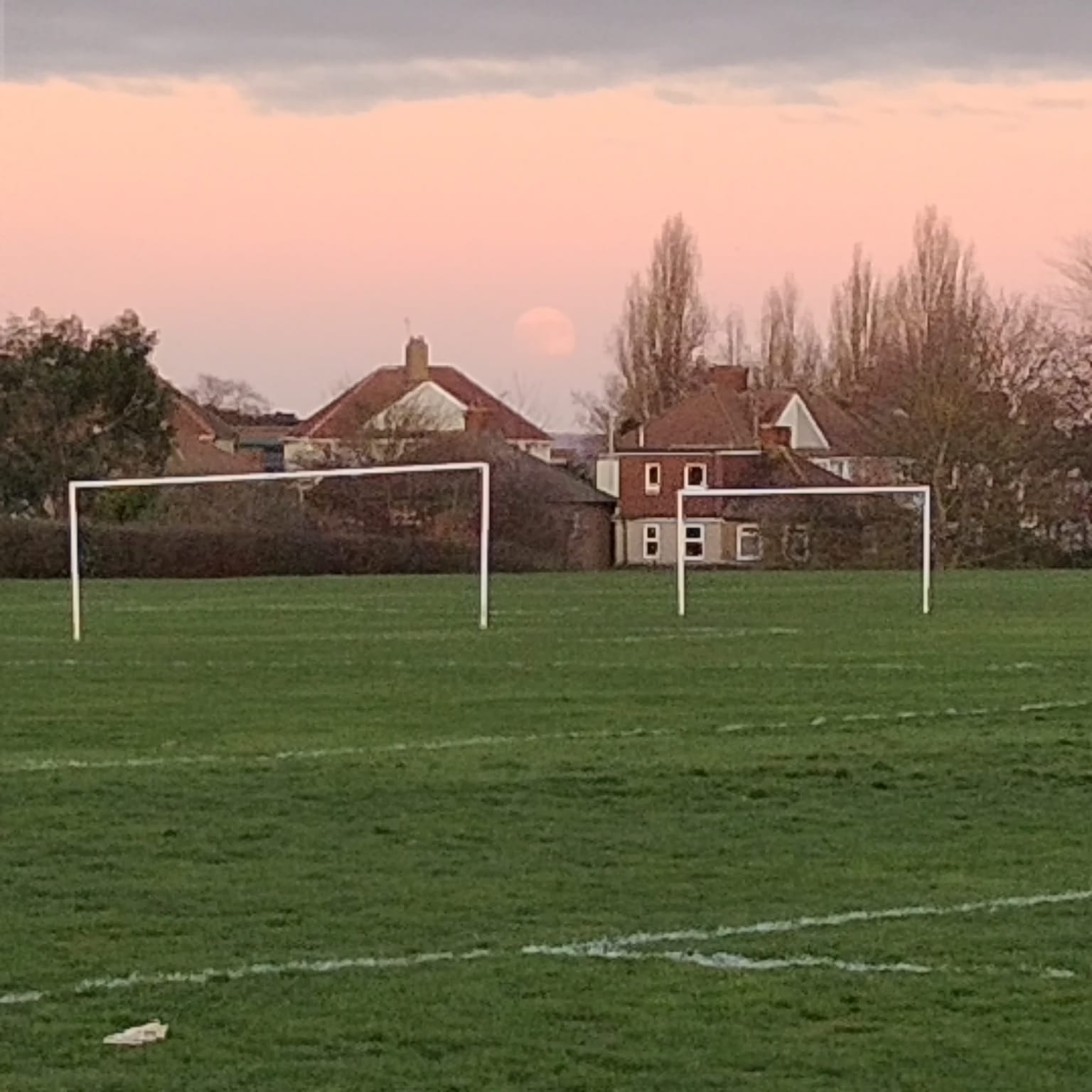
Full Moon rising by John Howarth taken from Bexleyheath.

Full Moon rising by Gary Hunt taken from the Isle of Sheppey.
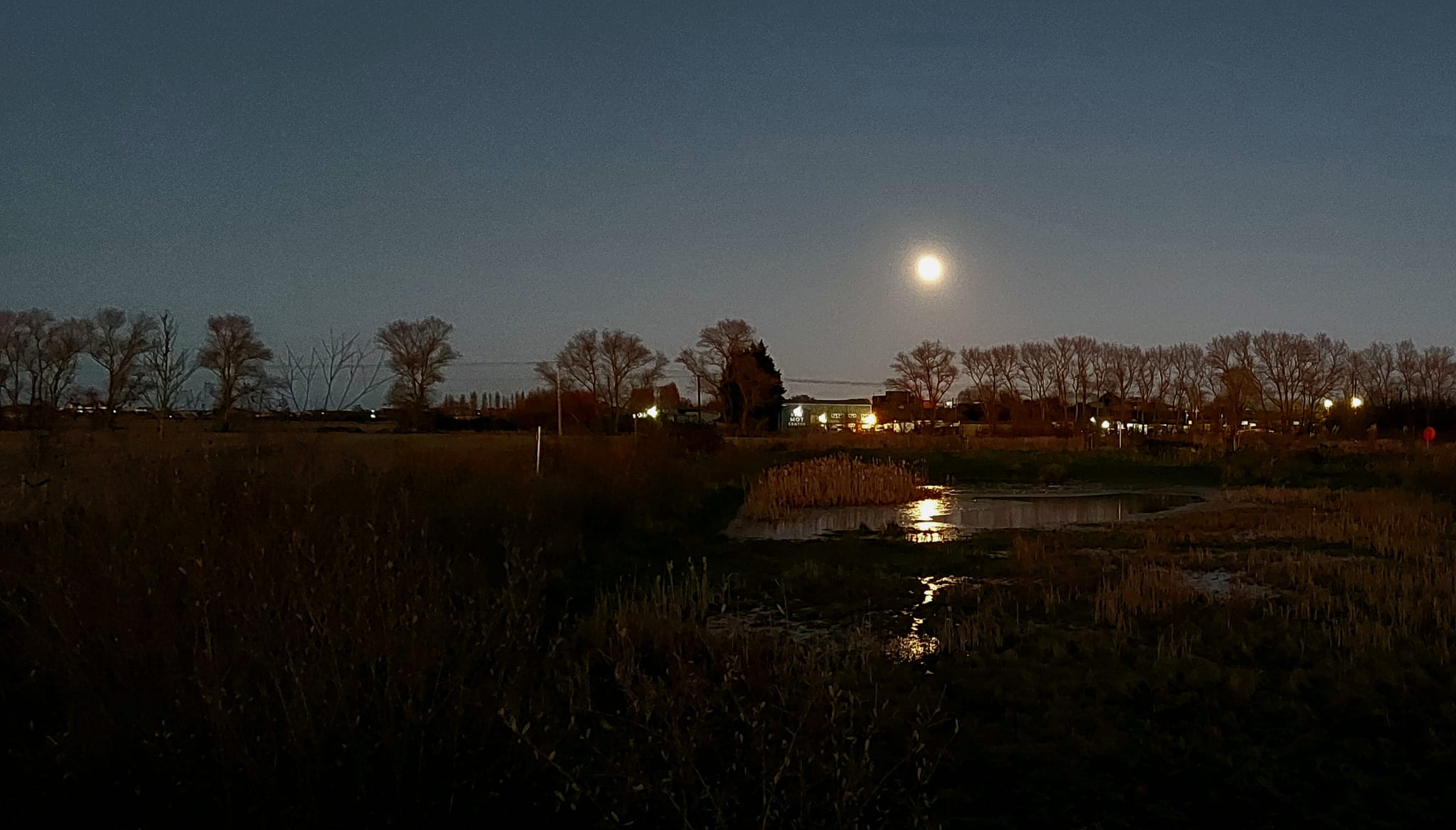
Full Moon rising by Kevin Smith taken from Deal, Kent.
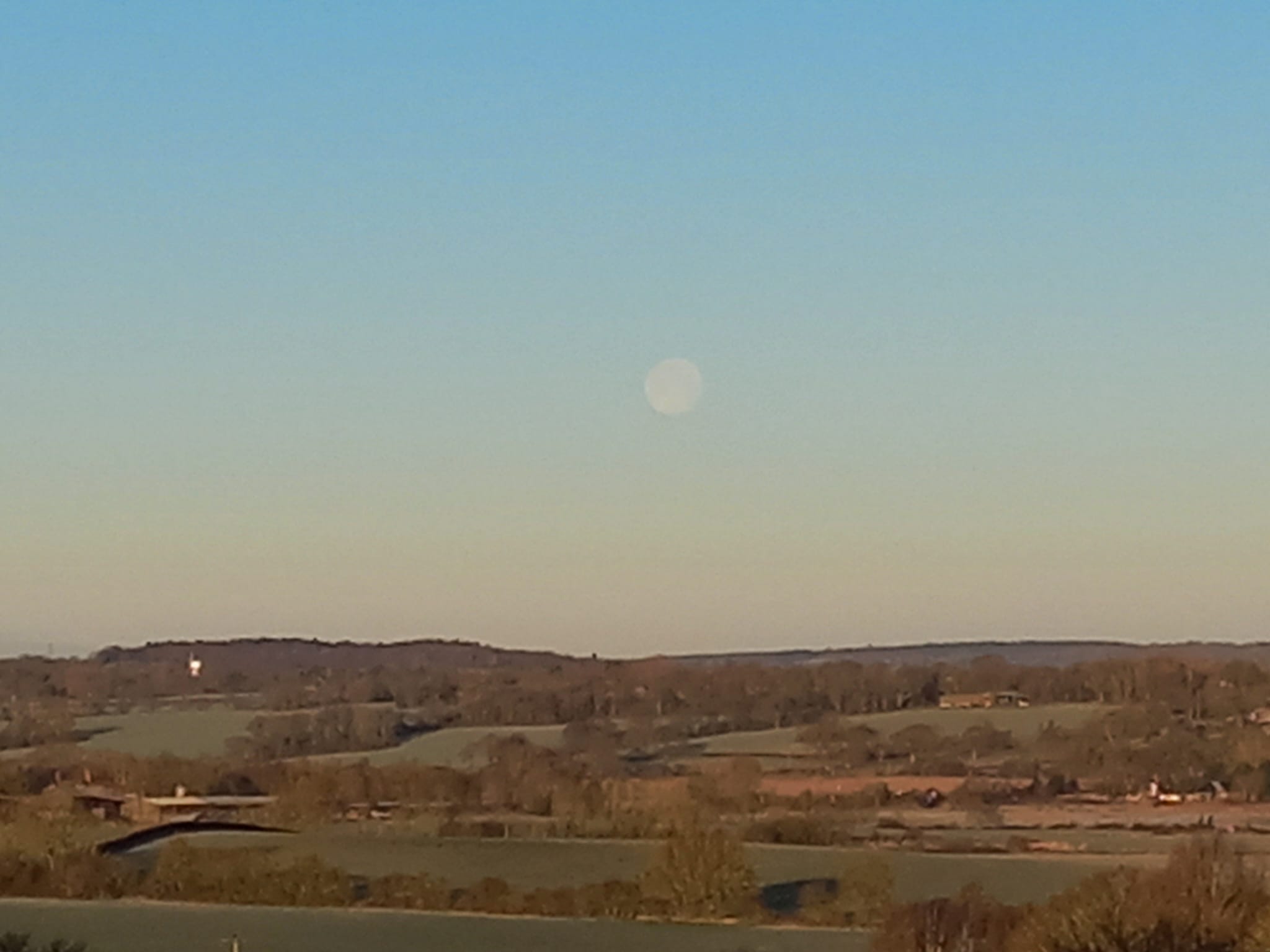
Full Moon rising by John Archer taken from East Sussex.
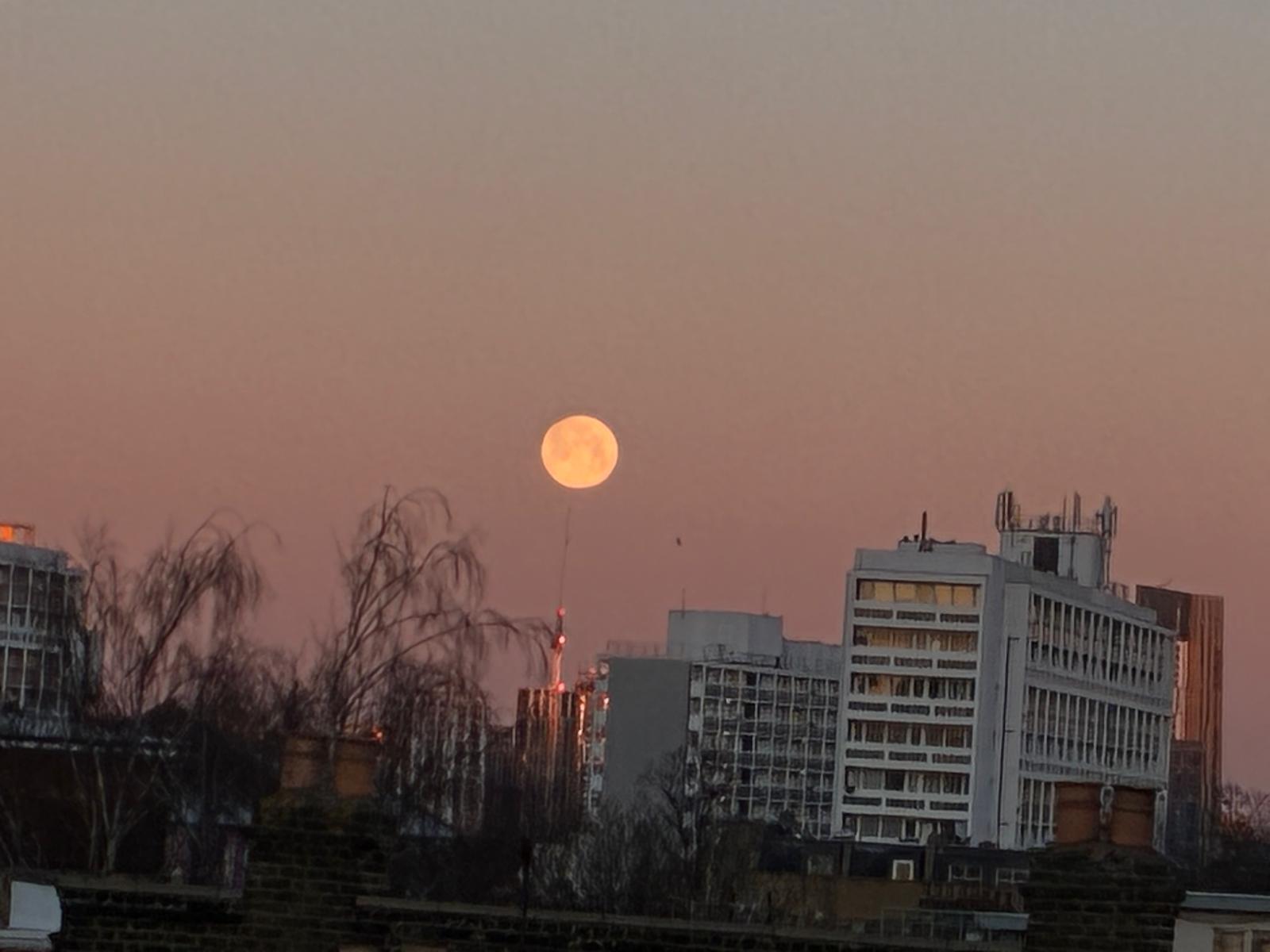
Full Moon by Dominique Ferrand taken from London.
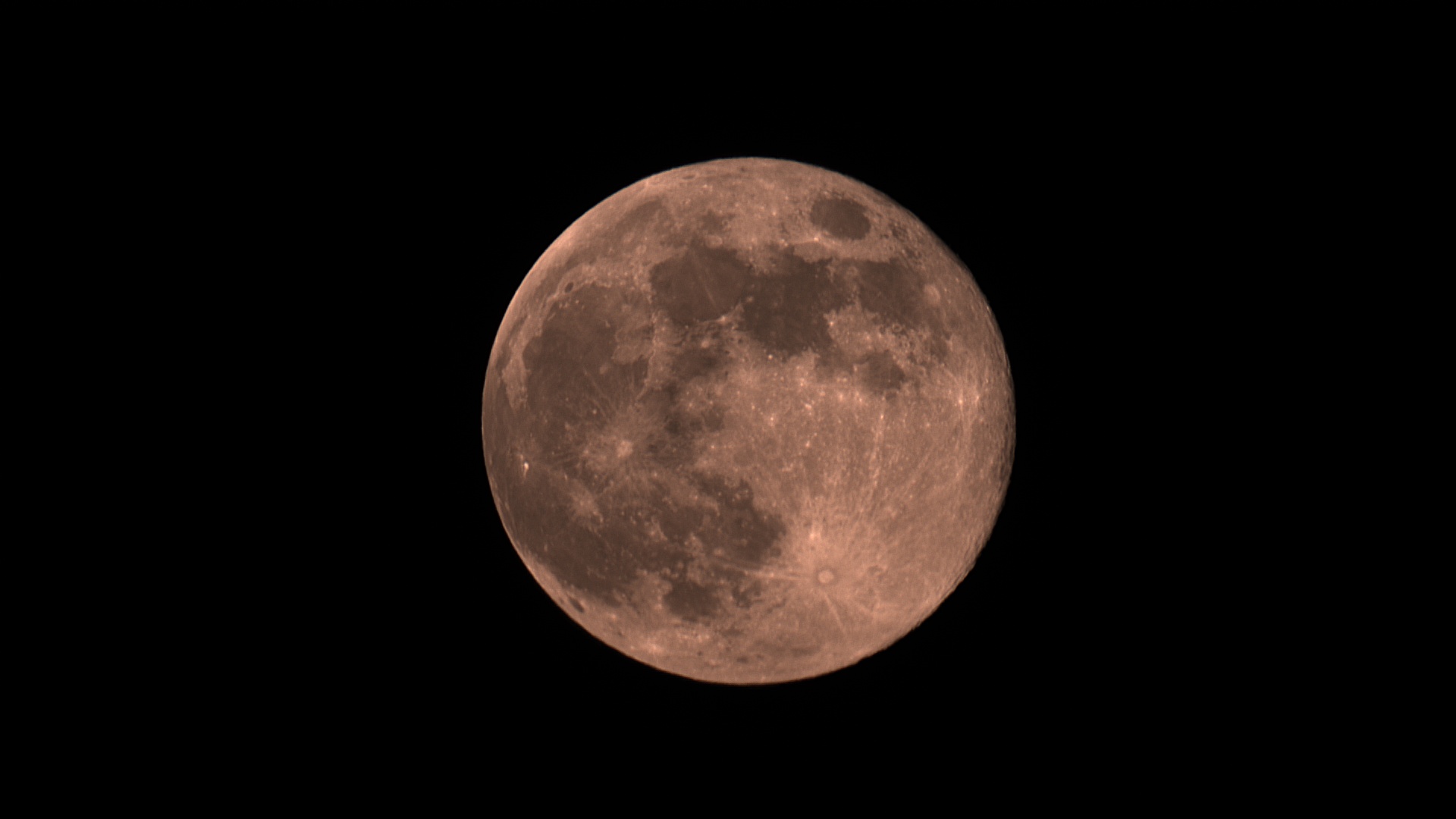
Full Moon by John Archer taken from East Sussex.
Taken using a Dwarf3 smart scope. The photo is made up of a stack of 20 images.
The Sun & Moon – 31st Dec 2025
The Sun & a Waxing Gibbous Moon (89.7% illuminated and 11.64 days old) taken on the last day of the year 2025.
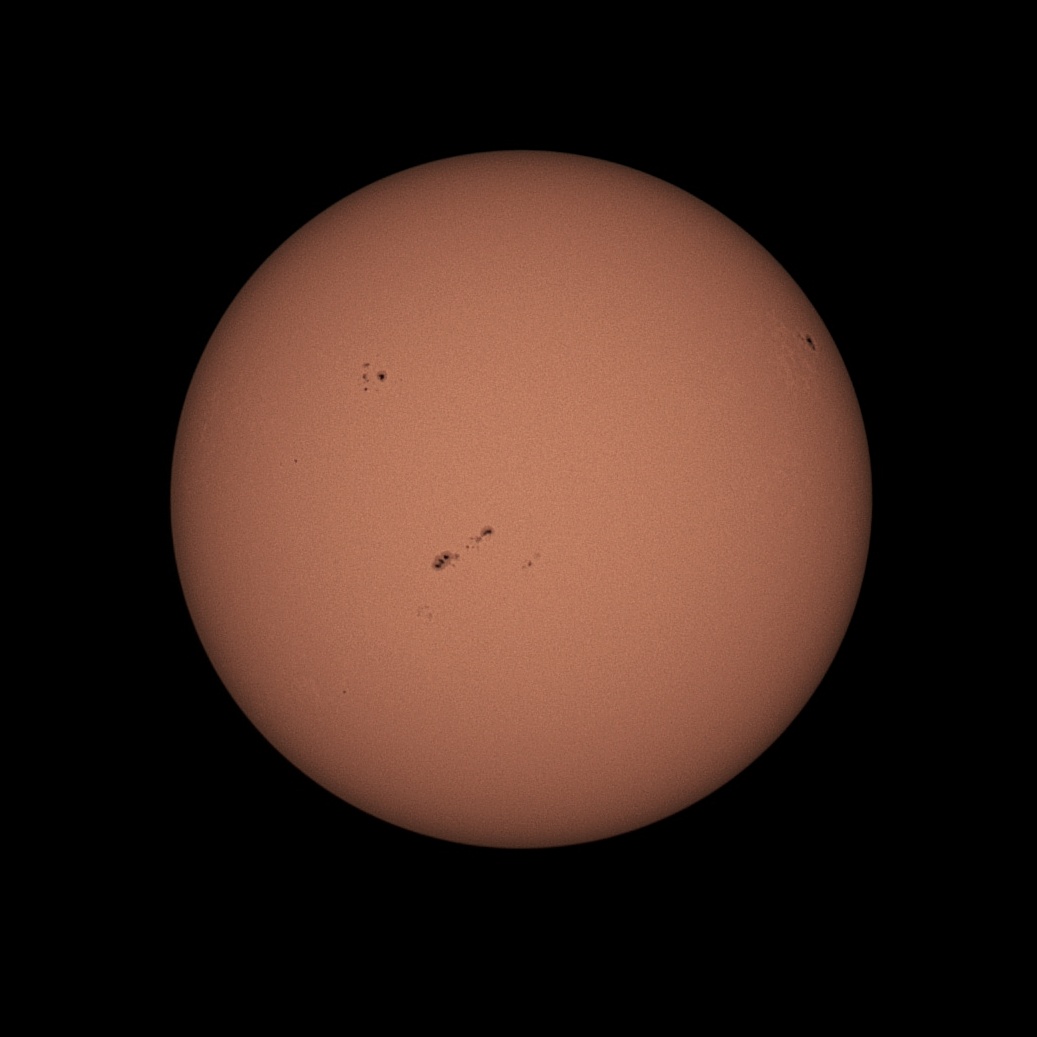
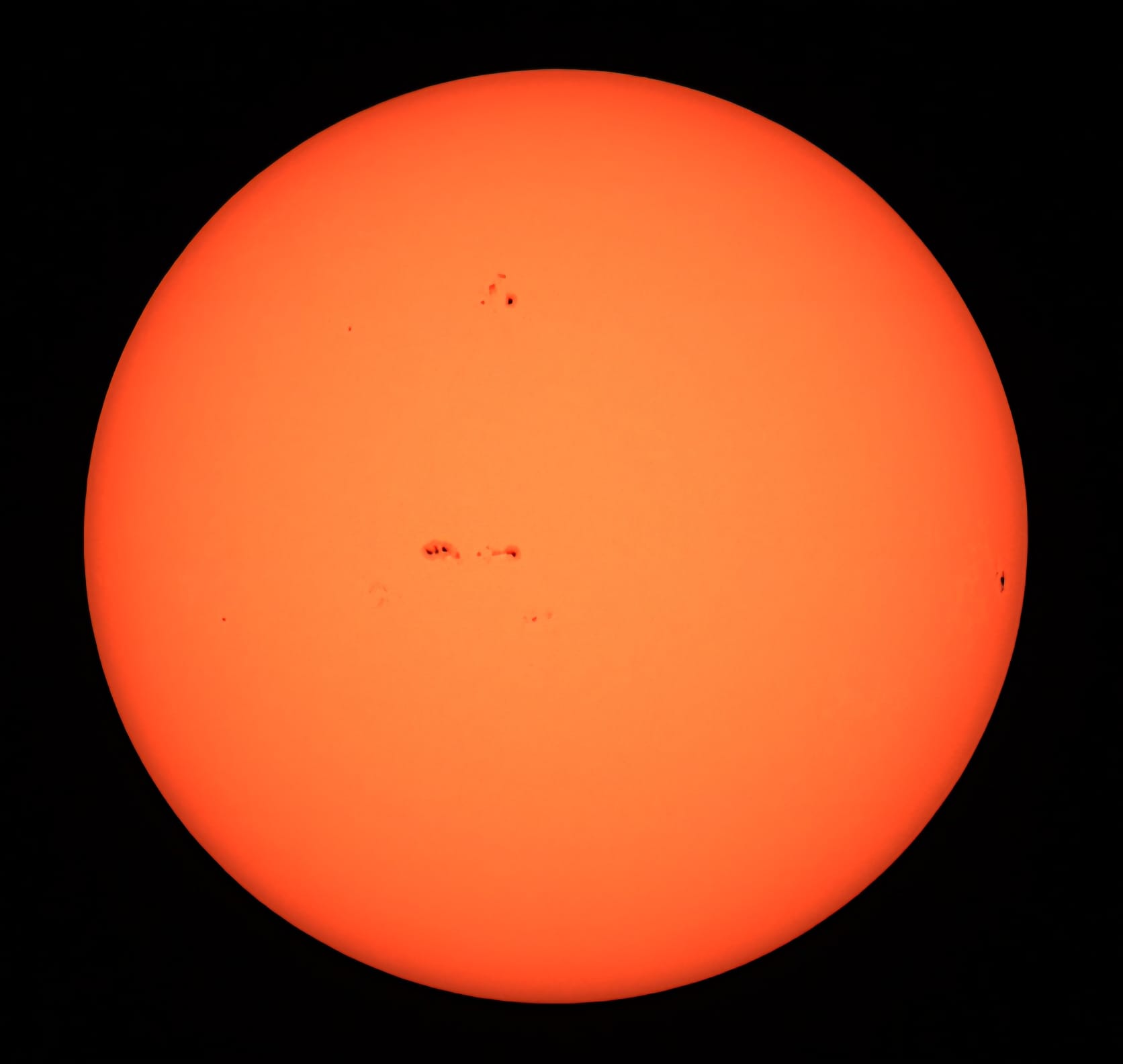
The Sun by Honor Wheeler taken from Dartford using a Dwarf3 smartscope. 50 stacked images and processed in Snapseed.
The Sun taken by George Buckberry from Hextable using a Dwarf3 smart scope.
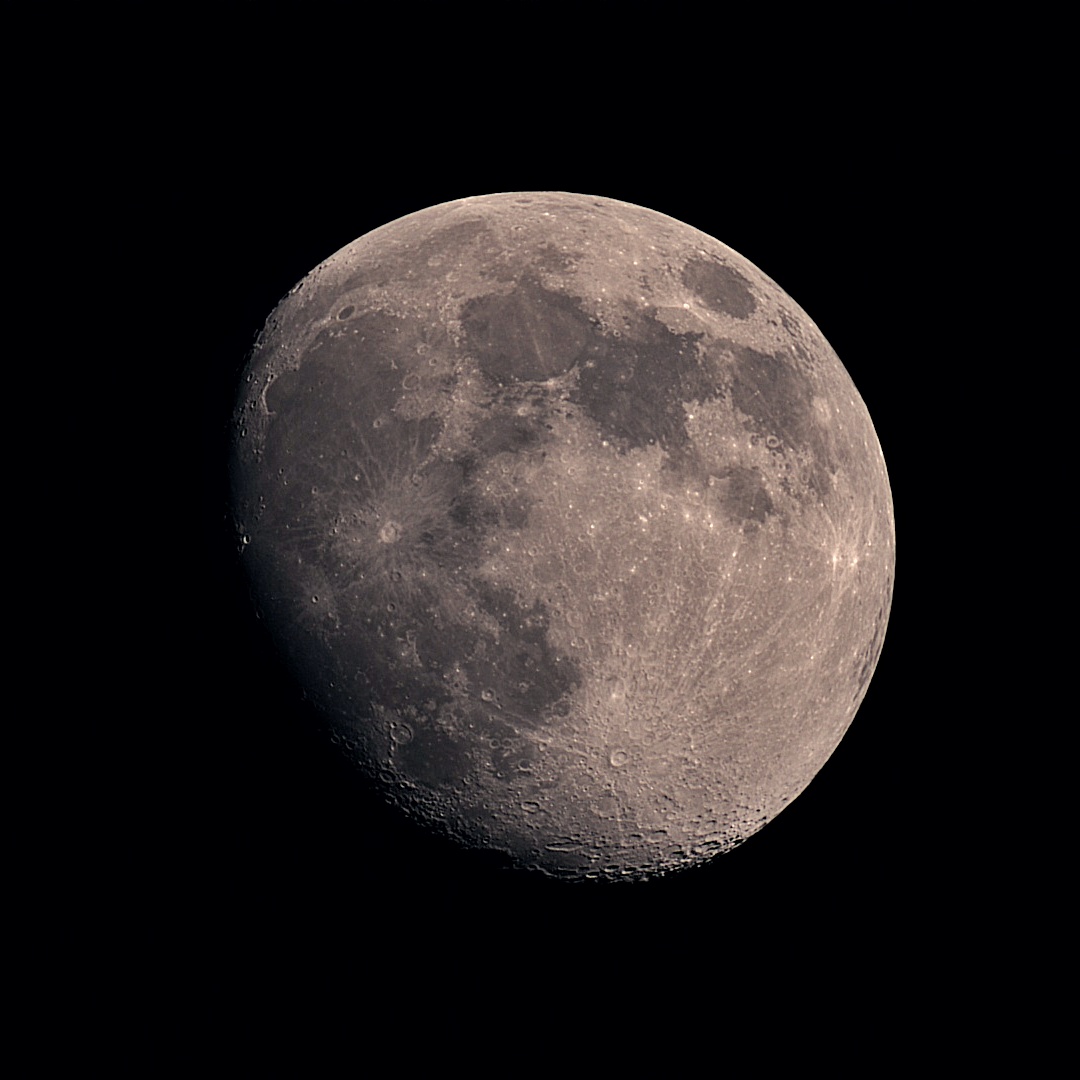
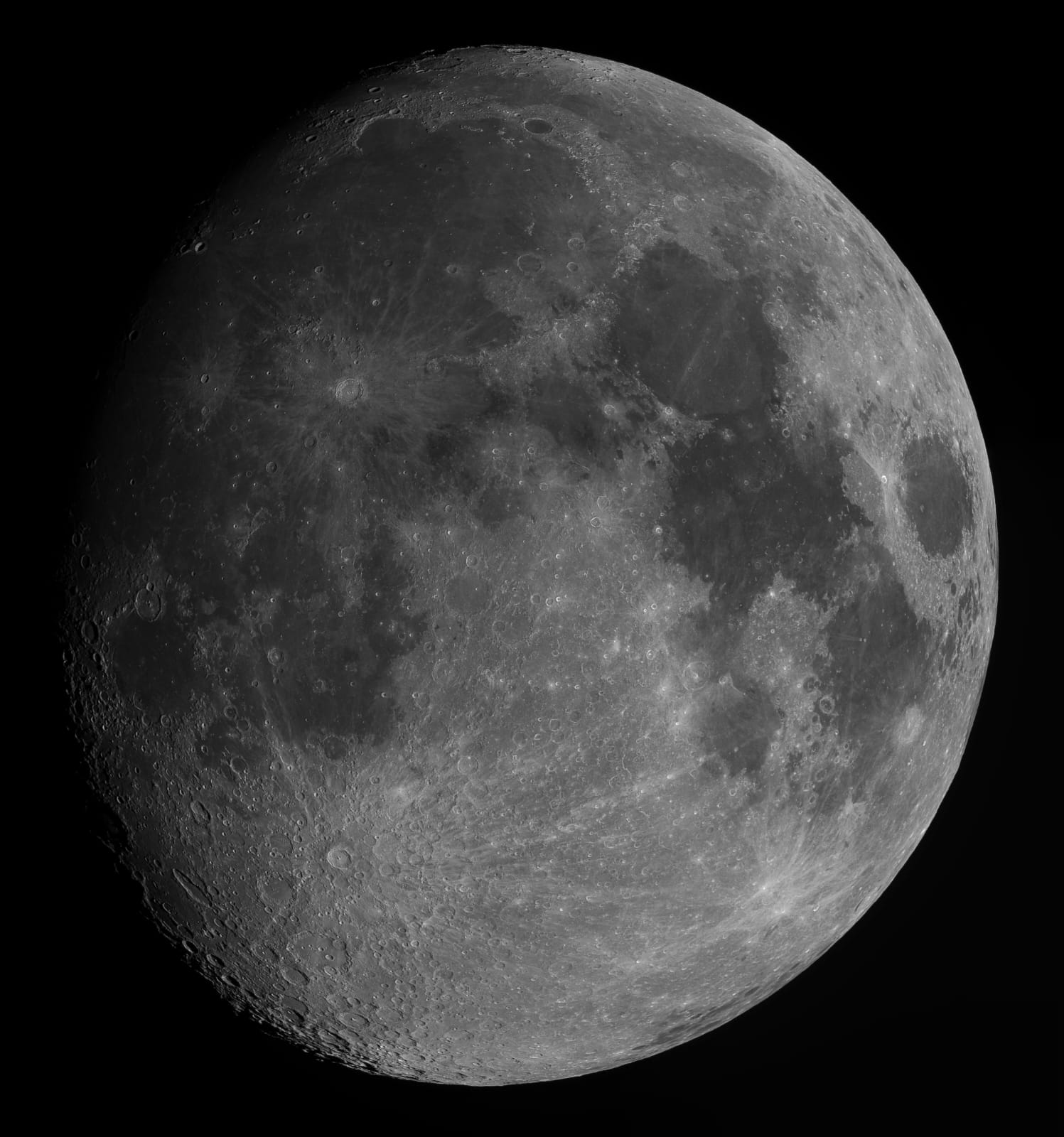
The Moon taken by Honor Wheeler from Dartford using a Dwarf 3 smartscope. 50 stacked images and processed in Snapseed.
The Moon taken by Neil Webster from St Mary’s Platt.
The image is made up of 6 frames: each 90s x 33fps (20% selected by AS). Neil used a AA 115 APO, EQ6 R, ZWO ASI290MM and R-IR Filter to capture the images and then processed them using Firecapture, AutoStakkert, Photoshop and Microsoft ICE.
Congratulations
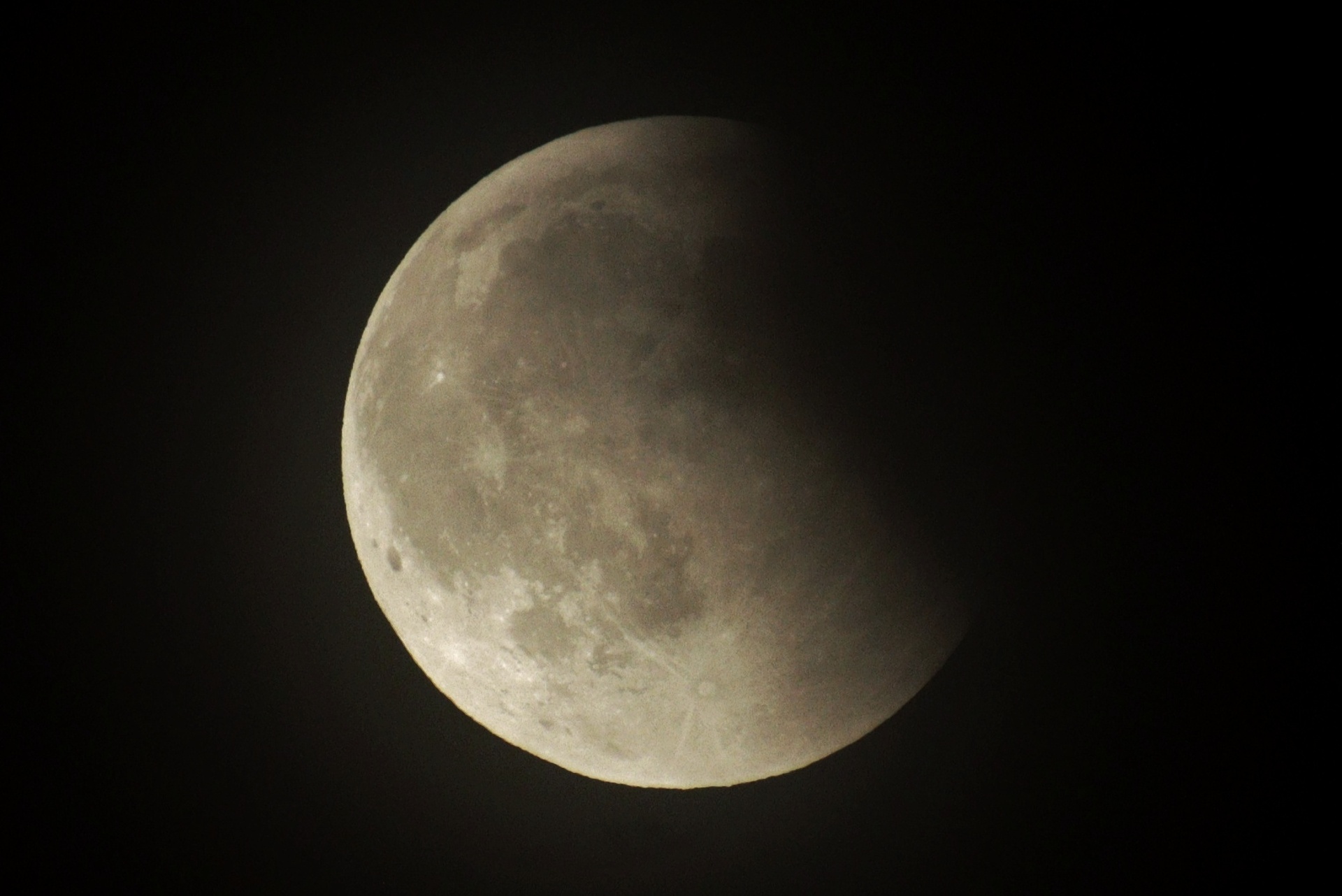
Congratulations to Honor Wheeler for her superb Lunar Eclipse image taken on the 7th September 2025 being shown at the BAA (British Astronomical Association) Society Meeting sky notes and in their Lunar section too!
Honor acquired the image using a Canon M6II, 18-400mm lens, set at ISO1000, F6.3, and 1/500sec
The last Supermoon of 2025
A fabulous selection of Supermoon images taken on the 4th/5th December 2025. The year 2025 featured a rare series of three consecutive supermoons: the October 7th Harvest/Hunter Moon, the November 5th Beaver Moon, and the December 4th Cold Moon, where the Moon appears larger and brighter than usual. These supermoons occur when a full moon coincides with the Moon being at or near its closest point to Earth in its orbit.
For more information about the term ‘Supermoon’ and where Full Moon names originate; check out the following sites/pages: https://en.wikipedia.org/wiki/Supermoon
https://www.almanac.com/full-moon-names
https://www.timeanddate.com/astronomy/moon/full-moon-names.html
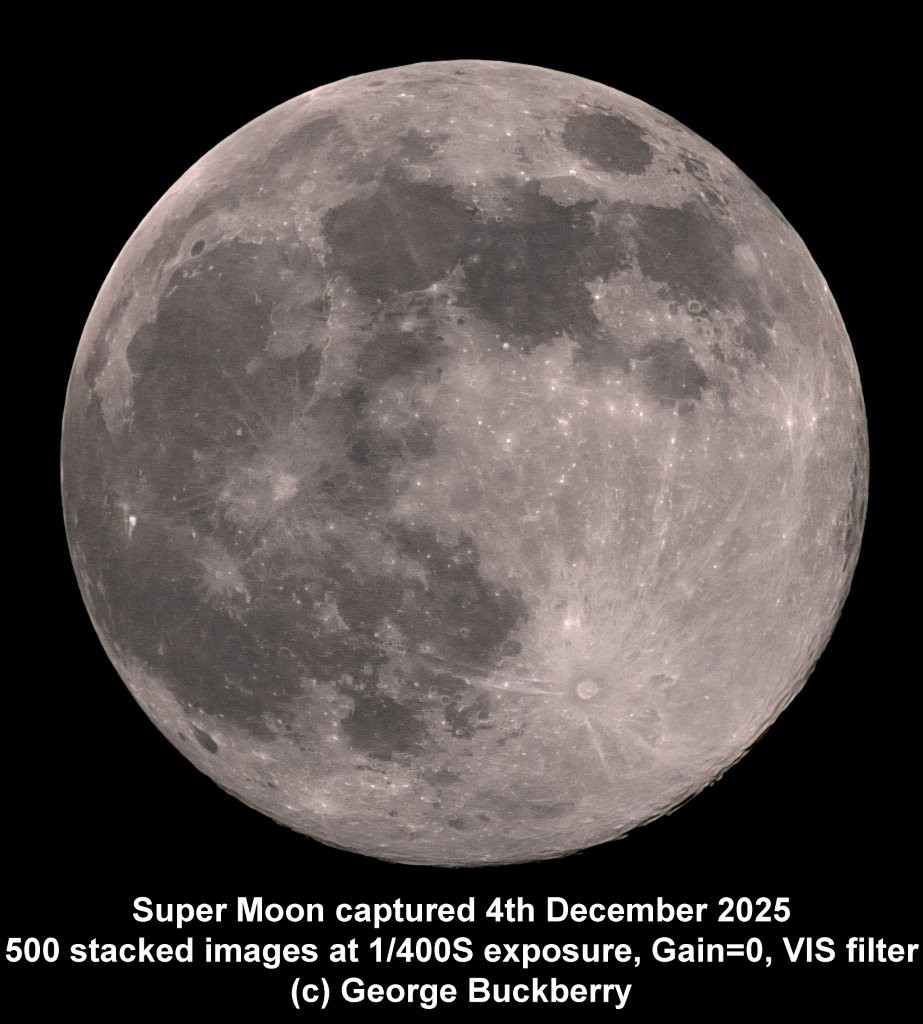
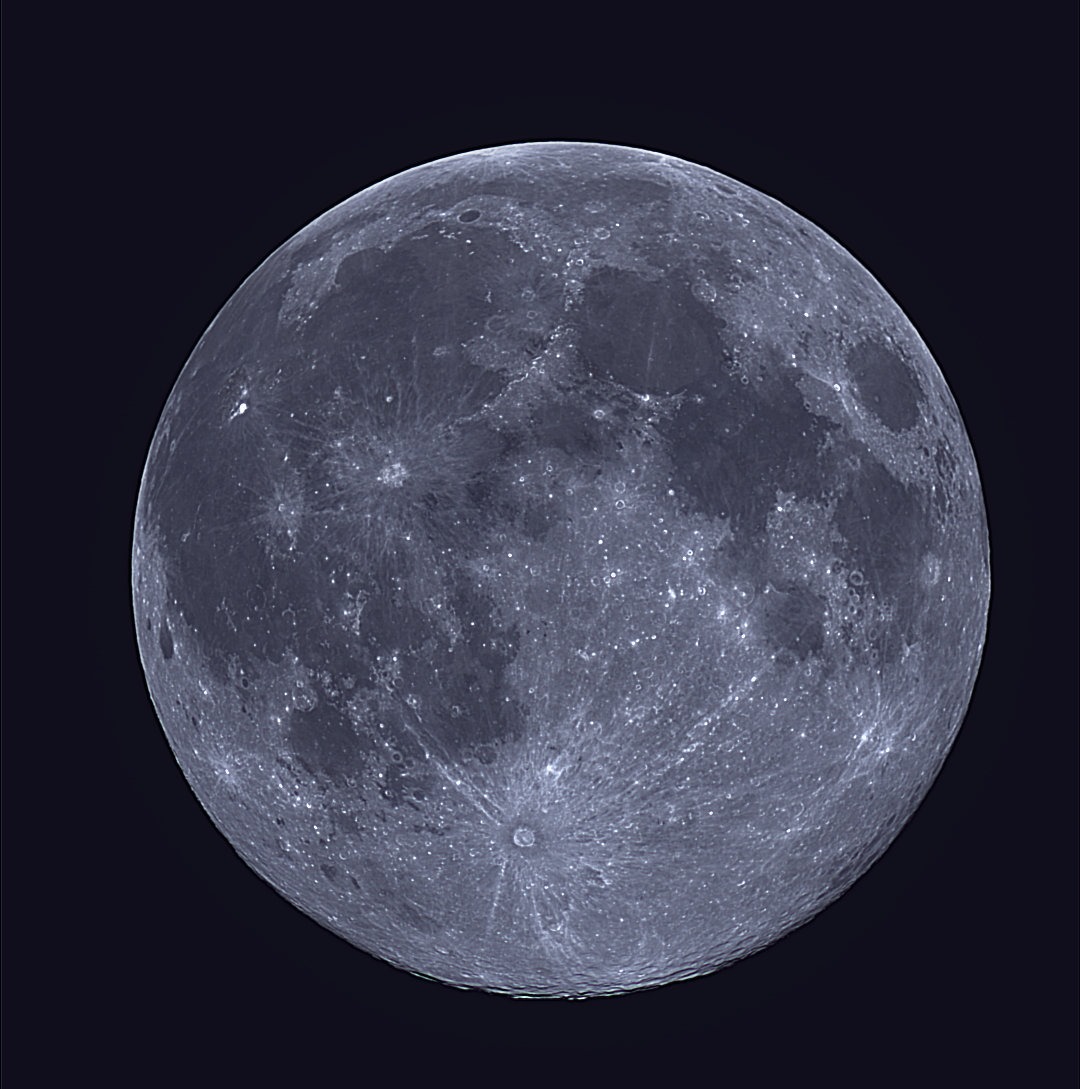
George used a Dwarf3 smartscope to take this image.
The Moon by Diane Clarke taken using a Seestar 50 smartscope.

The Moon taken by Neil Webster. The image is made up of 8 frames. Each 90s x 32fps. The image was taken using a AA115 APO, EQ6 R, ZWO ASI290MM, and R/IR Filter. It was processed using Firecapture, AutoStakkert, Photoshop, and Microsoft ICE. Taken from St Marys Platt, Kent, UK.
Lunar Halo – 13th Dec 2025
Four fab Lunar Halo images. All taken on the night of the 13th Dec 2025.
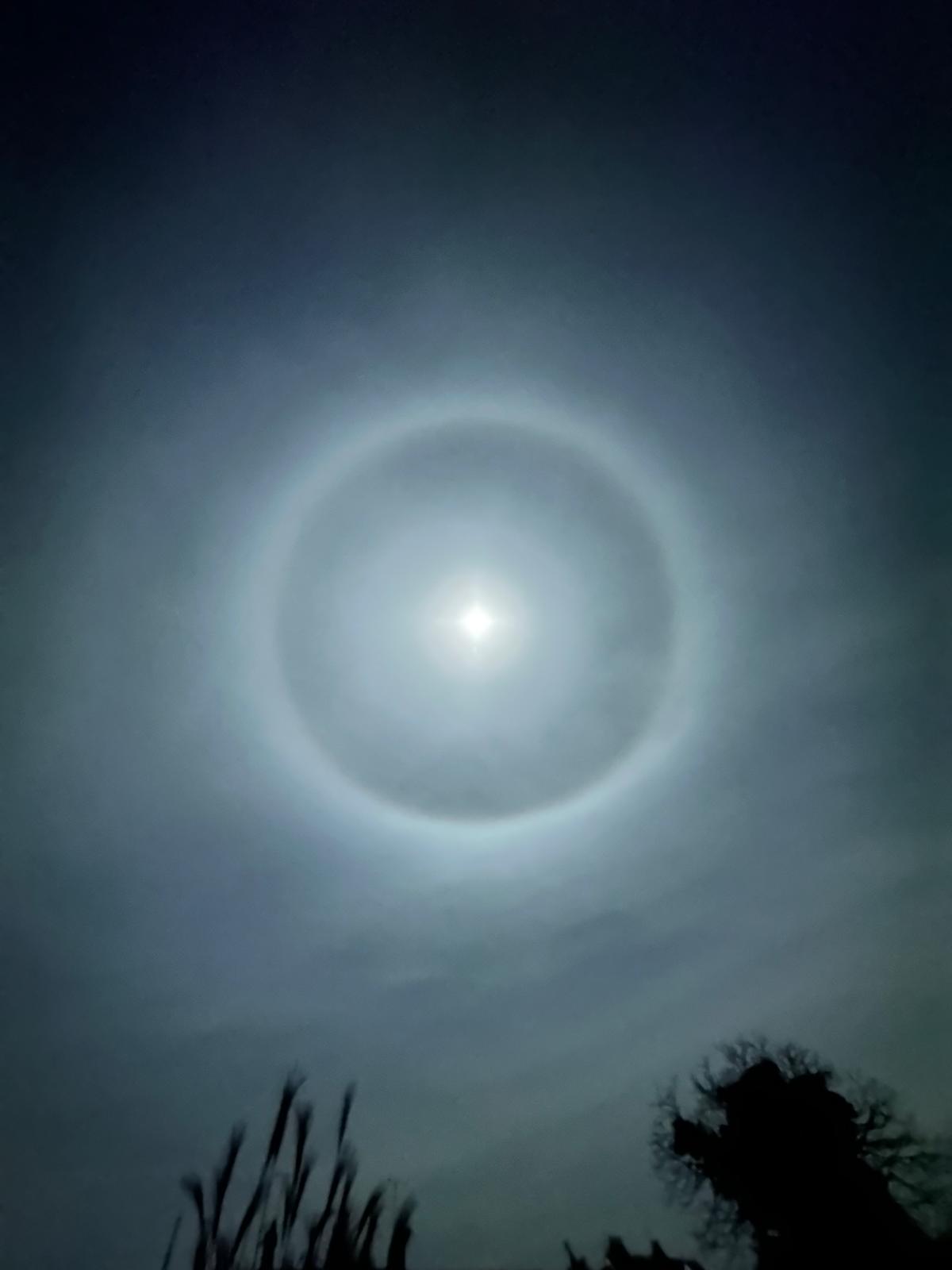
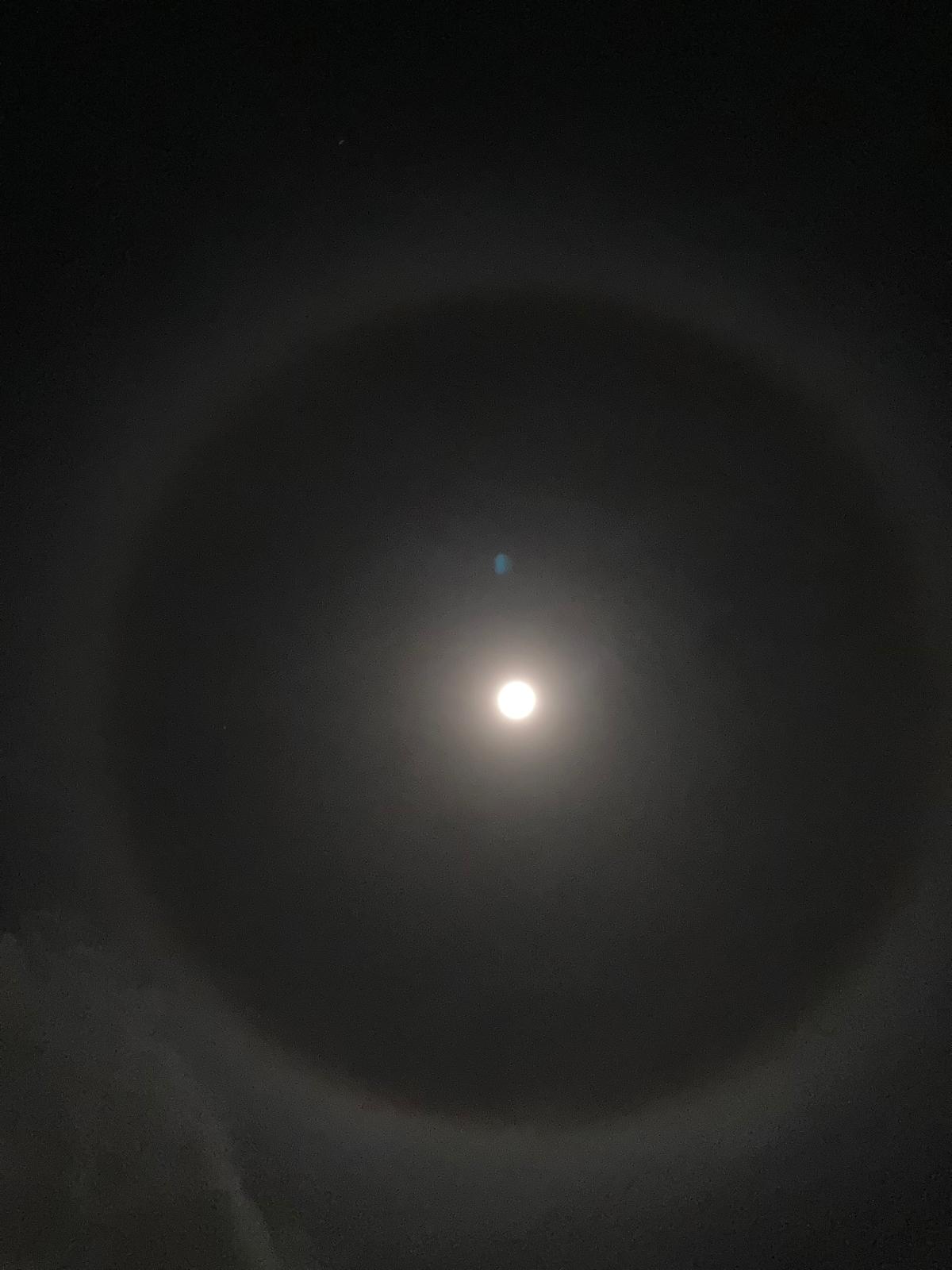
By Martin Crow from Burham-On-Crouch.
By Gary Hunt taken from Isle of Sheppey.
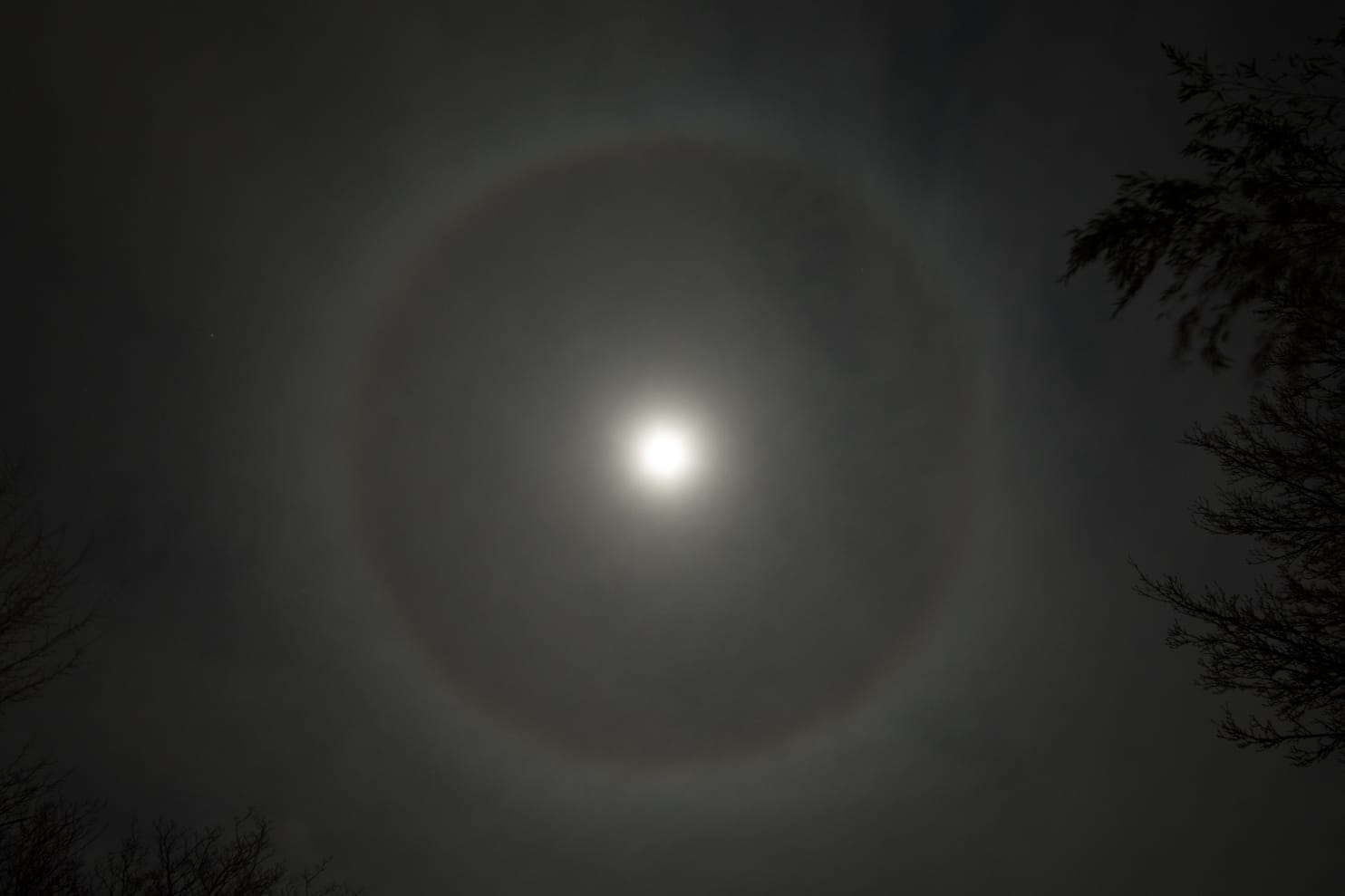
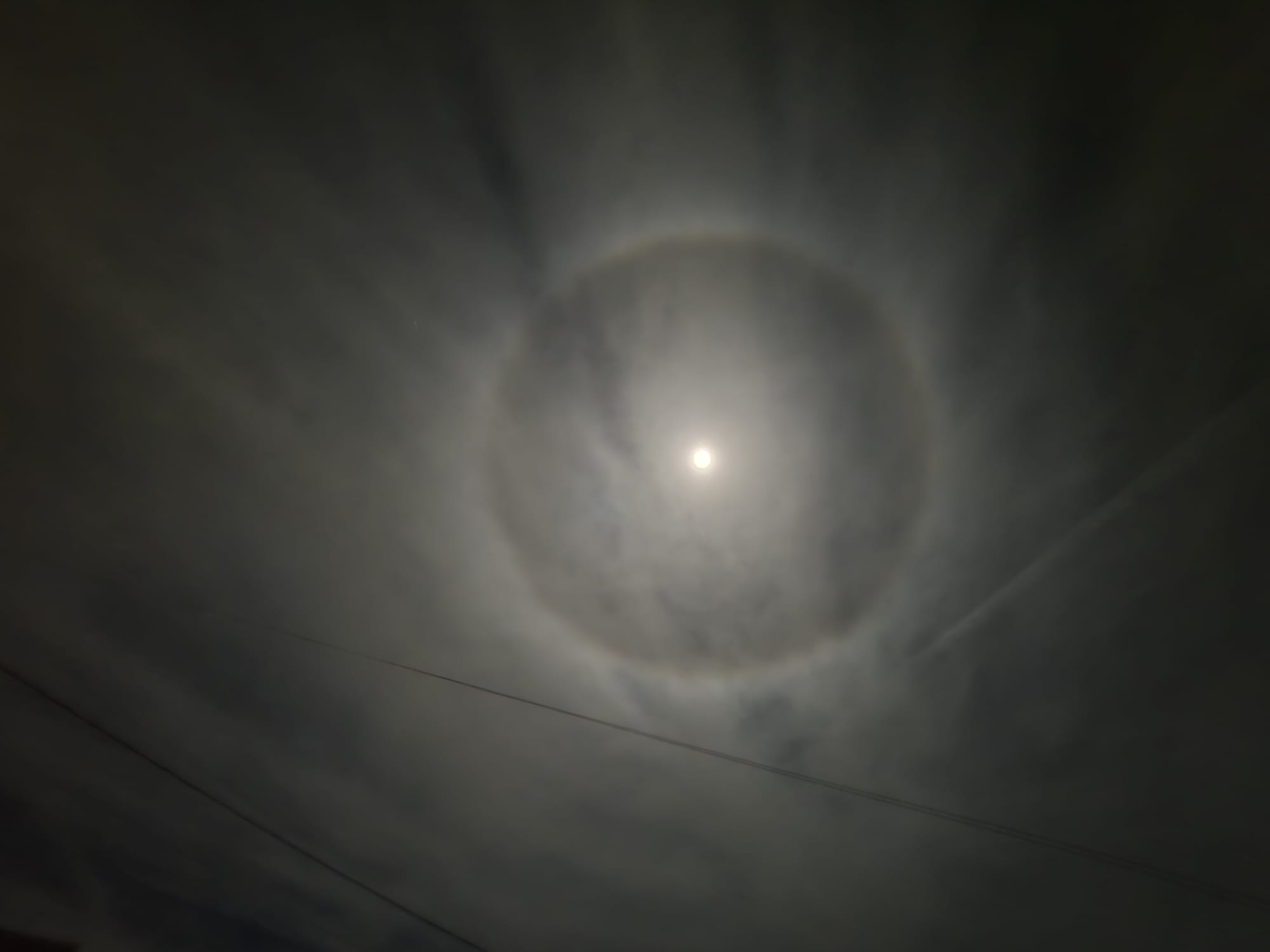
By Honor Wheeler from Dartford.
By George Buckberry from Hextable.
John Archer’s images – 21st Nov to the 28th Nov 2025
A superb collection of images taken by member John Archer from the 21st to the 28th Nov 2025 using a Dwarf3 smartscope.
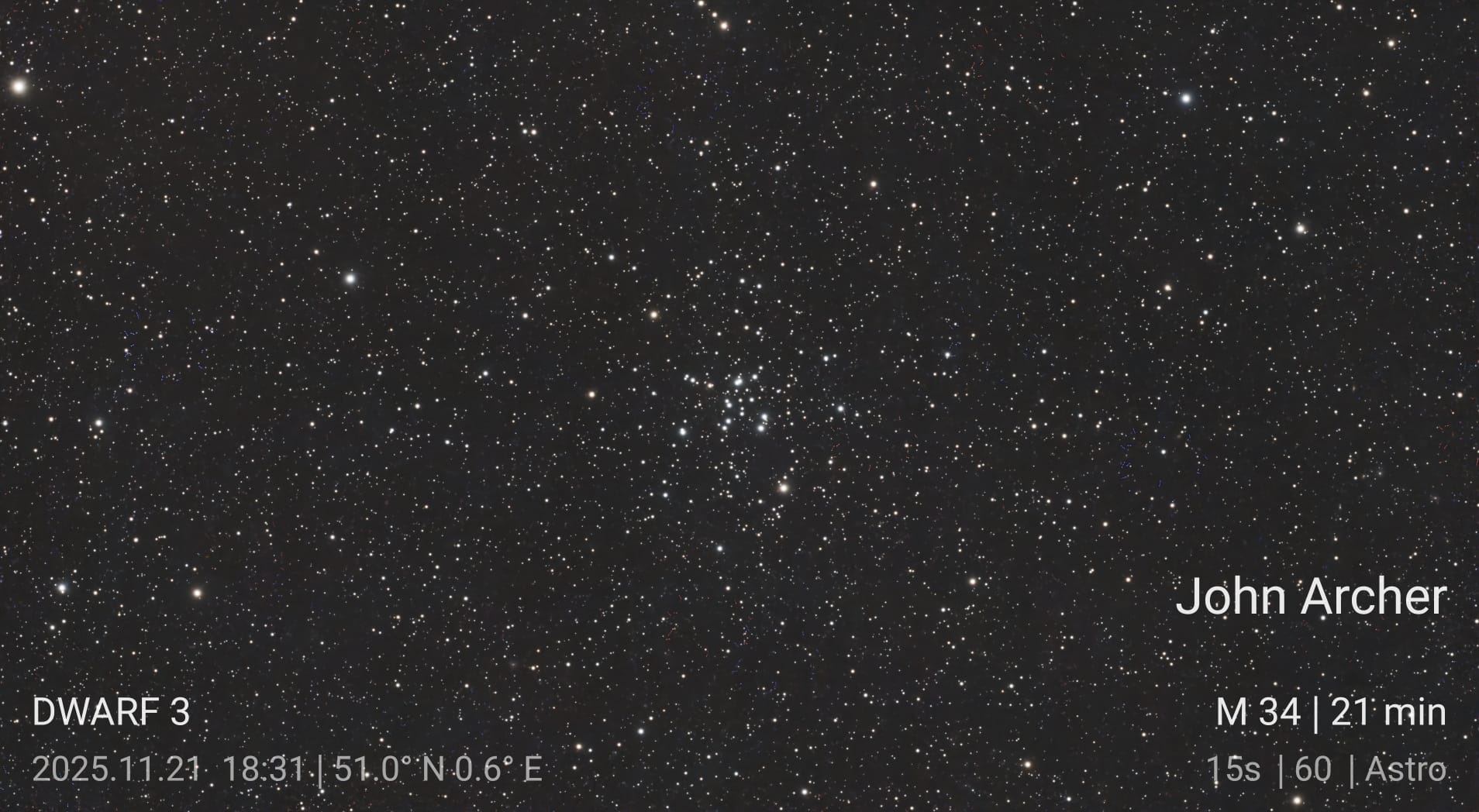
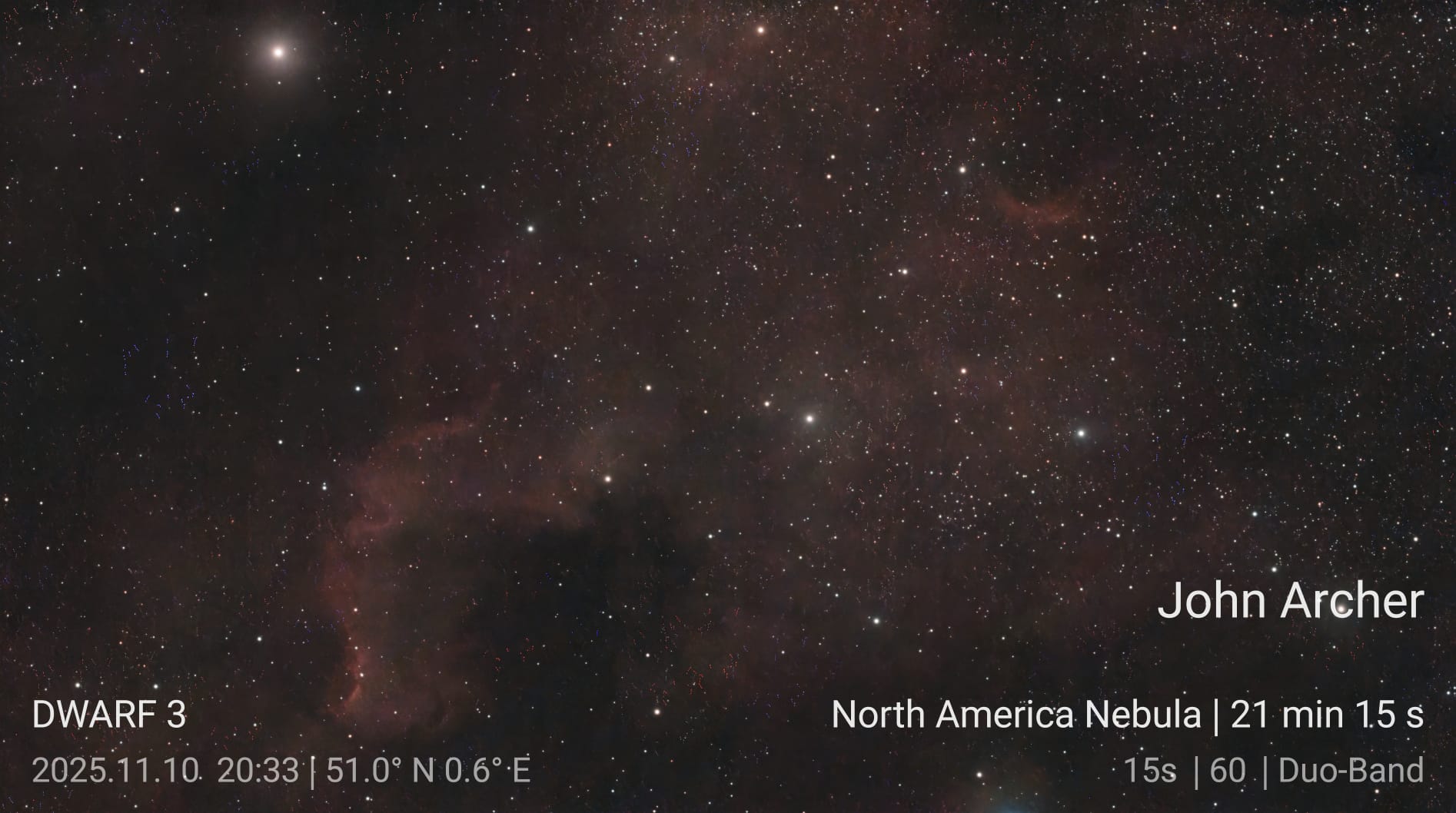
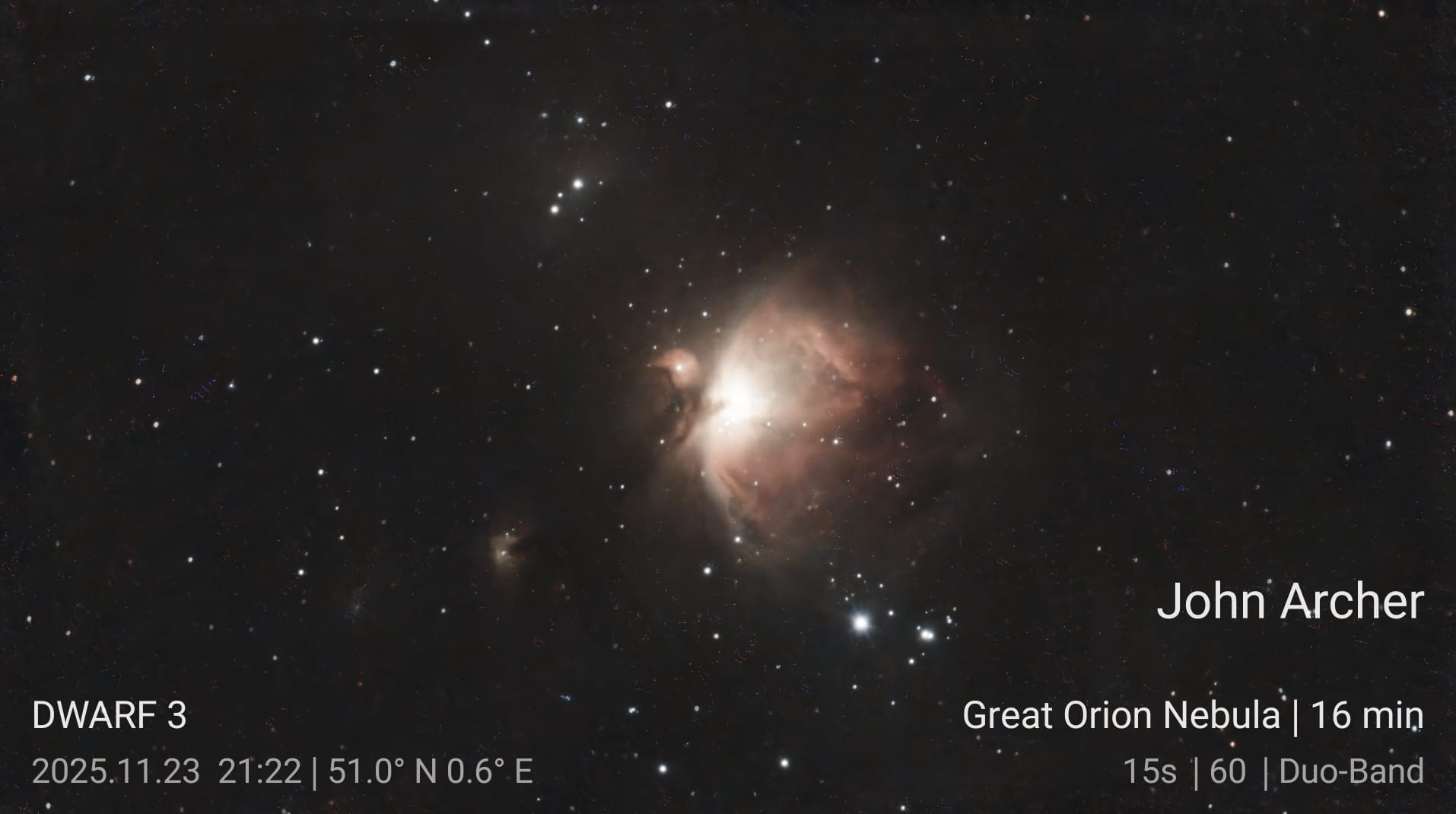

The Moon on the 28th Nov 2025
The Moon – 29th November 2025
An absolutely stunning image of the Moon taken by member Neil Webster on the 29th November 2025.
MOON: Waxing Gibbous, 66.8% illuminated and 9.56 days old.
Neil acquired the image using an AA 115 APO, EQ6 R, ZWO ASI 290MM, and R/IR filter.
8 frames: each 90s x 31fps (best 20% selected)
Processed using AutoStakkert and Photo Shop.
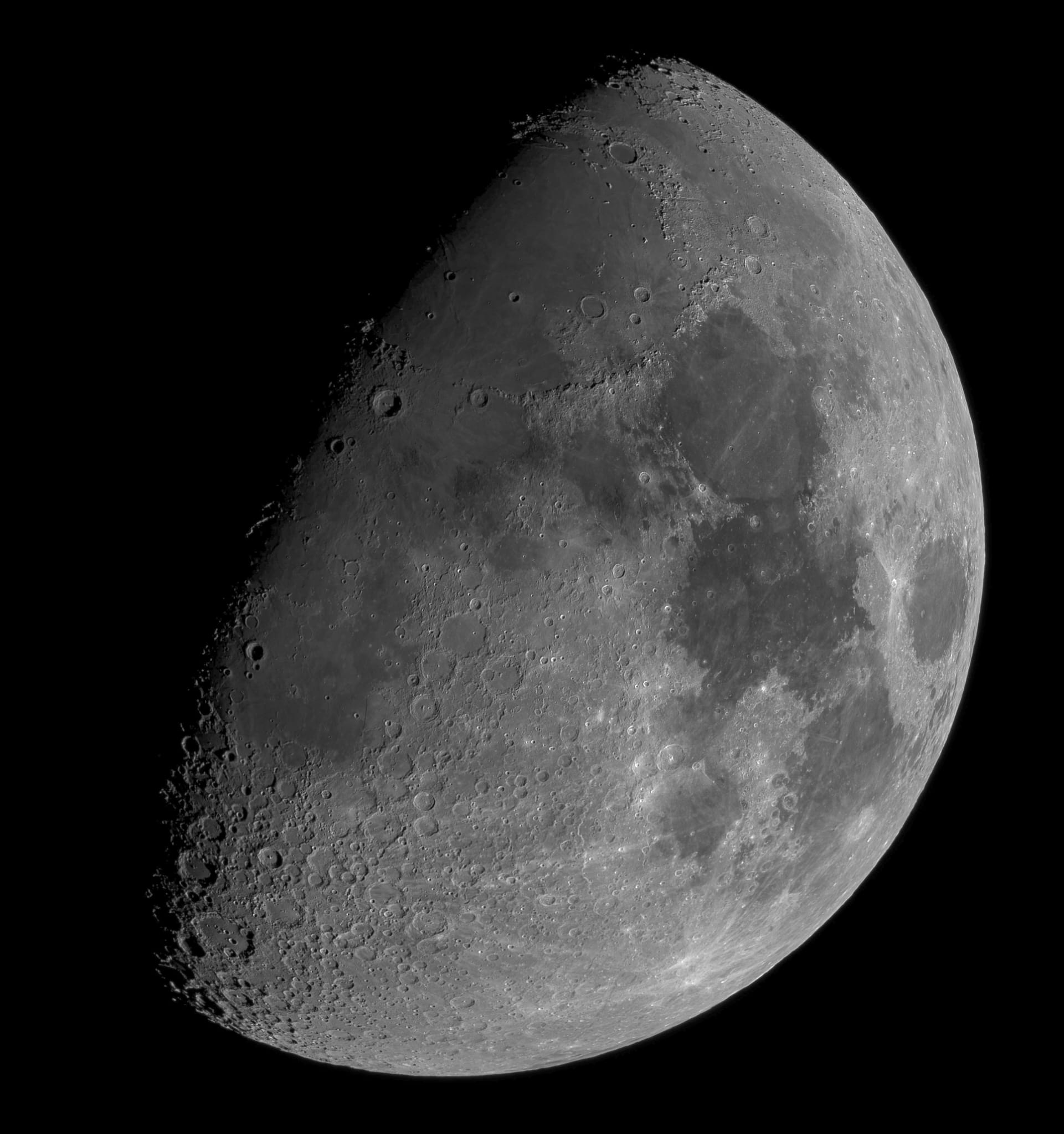

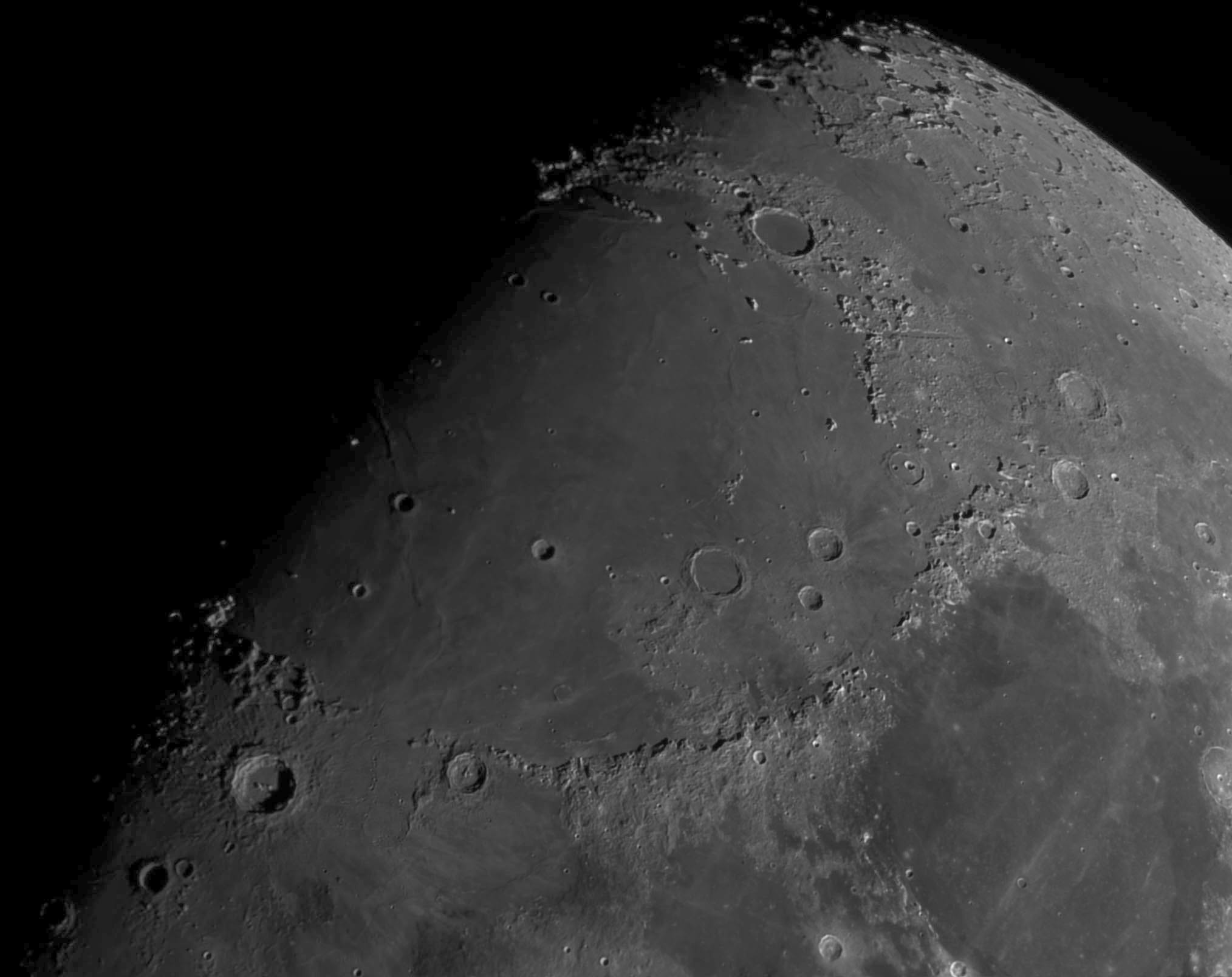
Craters Clavius, Tycho etc.
Check out Neil’s Flickr page at https://www.flickr.com/photos/137388222@N05/
Copernicus, Archimedes, Plato, Montes Apenninus, Montes Caucasus and Alpine Valley.
The Moon – 30th November 2025
A super image of the Moon taken by member George Buckberry on the 30th November 2025; using his smart scope Dwarf3. The image was taken at 16:35 UTC, Exp 1/320s, Gain 10, and a VIS filter was used.
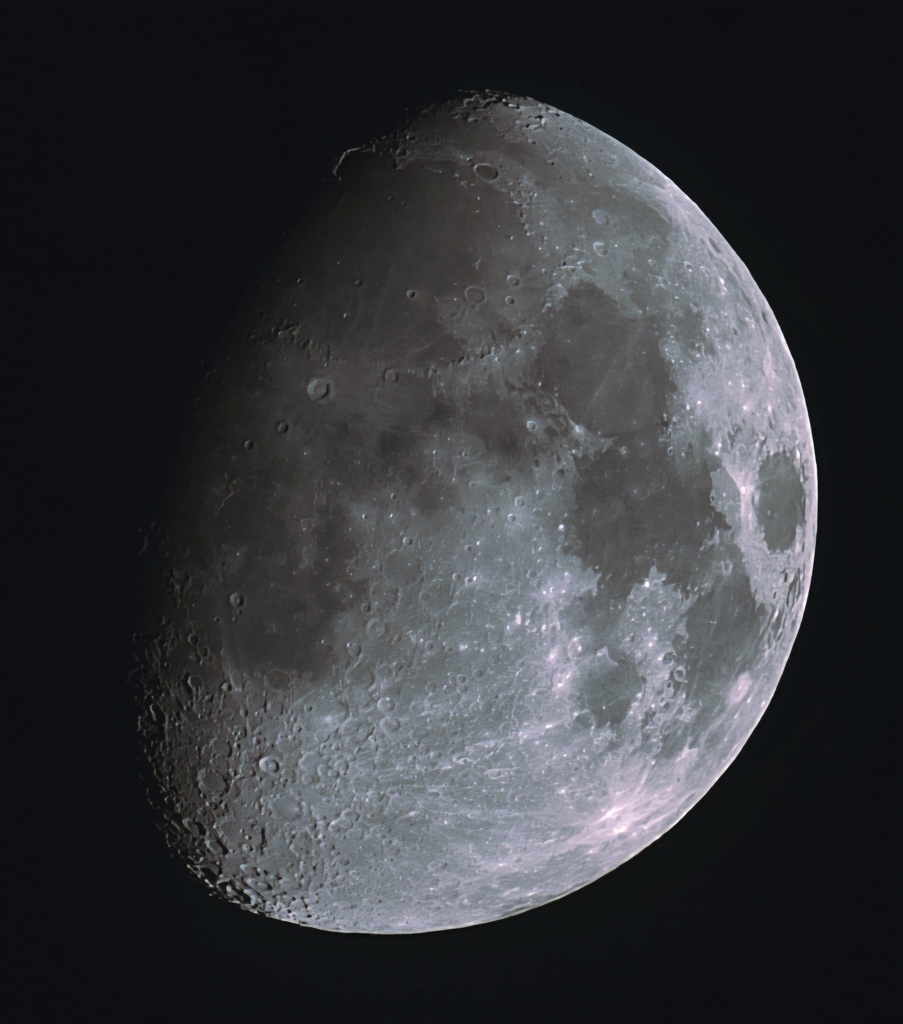
Moon
A fantastic image of a waning gibbous Moon taken by member Diane Clarke on the 8th November 2025 using a Seestar s50 smart scope.
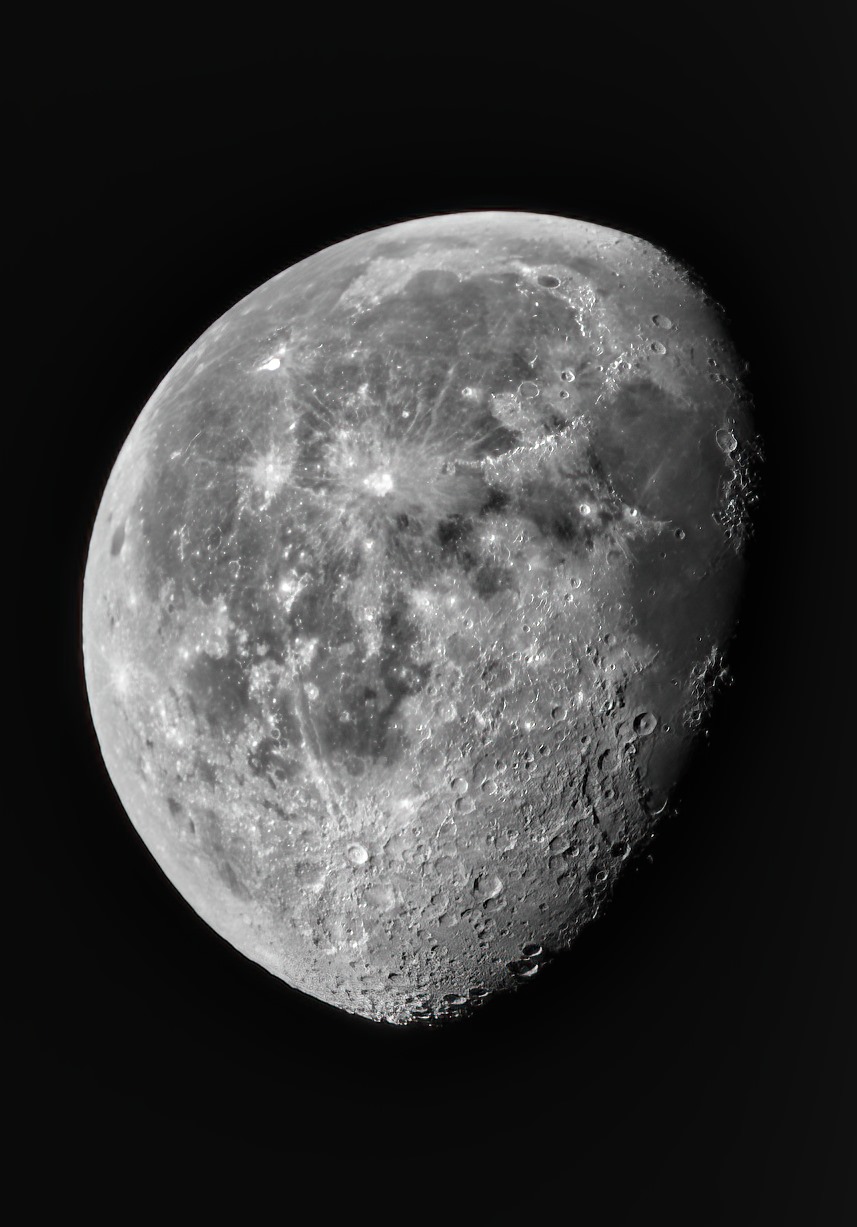
George Buckberry’s Dwarf3 images from the 8th and 9th November 2025
A super collection of images taken by member George Buckberry on the 8th and 9th November 2025 using his Dwarf3 smart scope.

The Moon: 16 subs at 1/400th S exposure, Gain=0 and a Vis filter.
Details of how George took the rest of his images with the Dwarf3 are on written the photos.
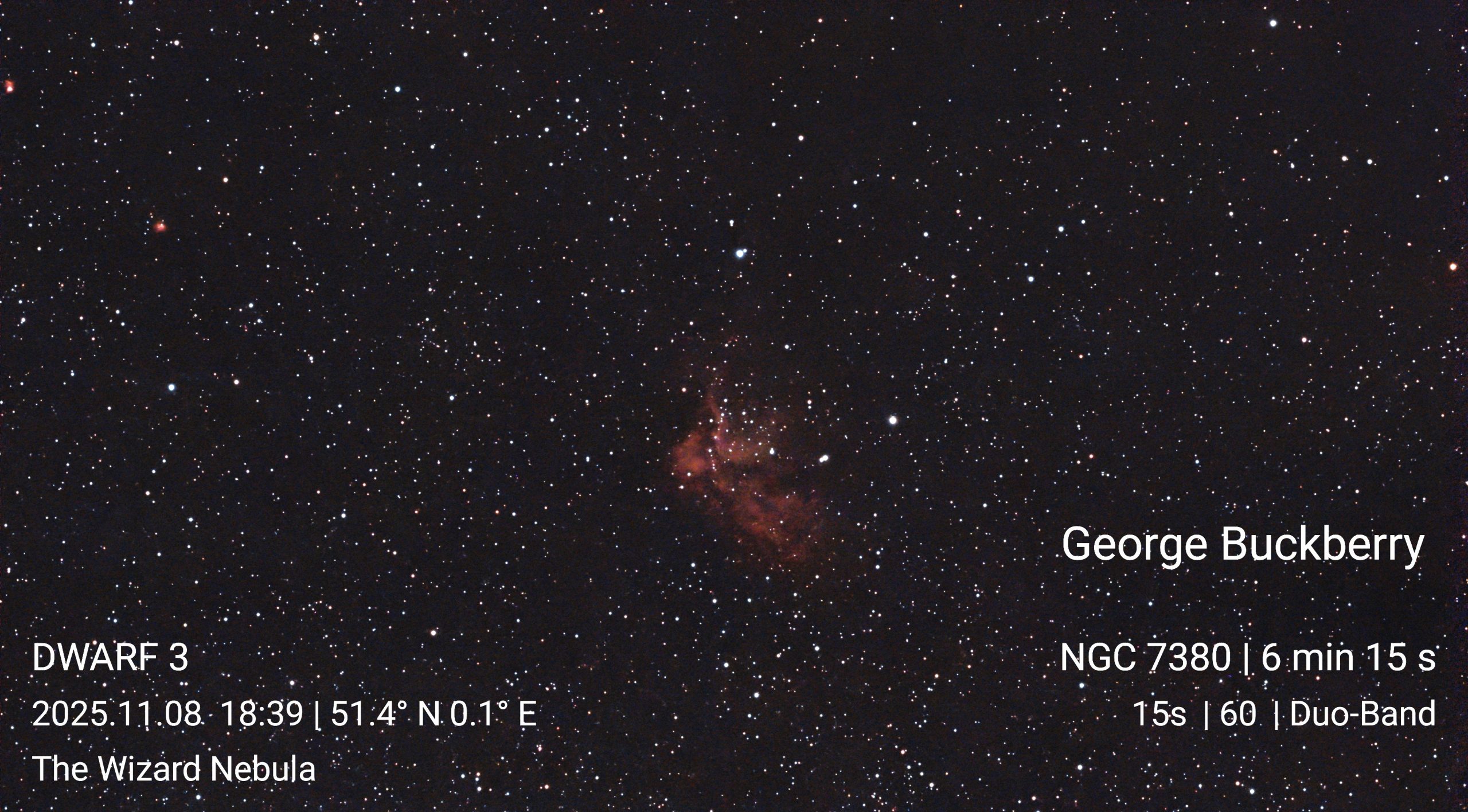
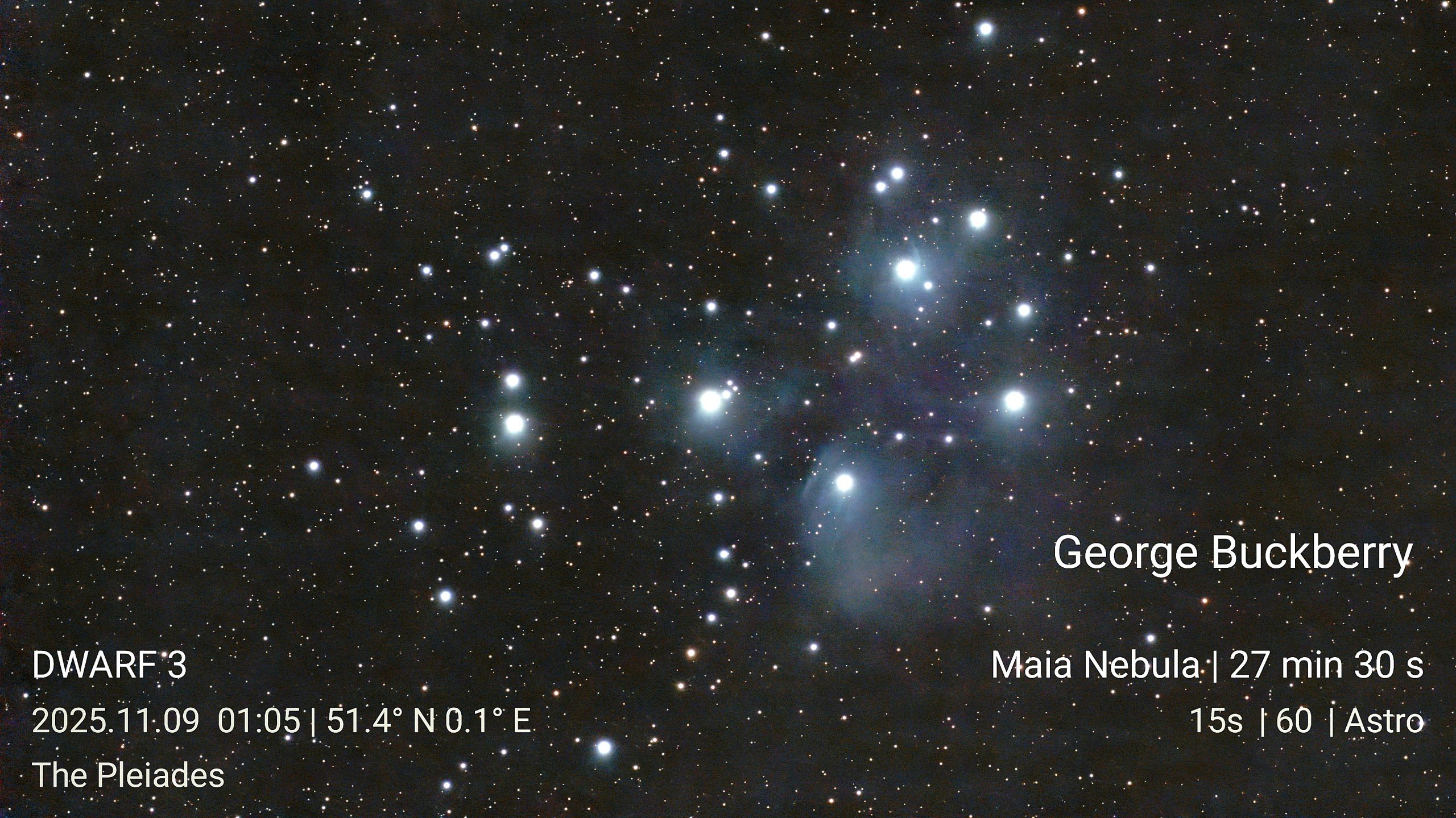
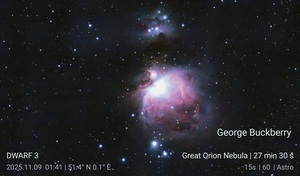



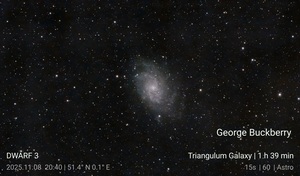
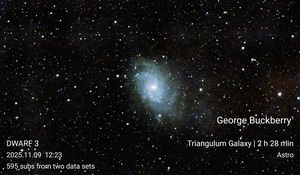
George Buckberry images taken on the 2nd Nov 2025
Three super images by member George Buckberry taken on the 2nd November 2025 using a Dwarf3 smart scope. All the images were run through Stella Studio.
- The Moon
- 300 stacked images at 15S exp, Gain10 and a Vis filter used.
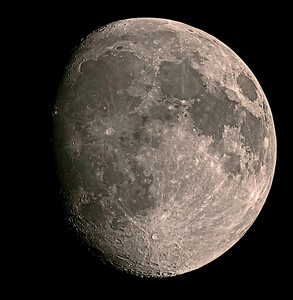
- The Veil Nebula
- A four panel mosaic of 200 stacked images at 15S exp, Gain60 and a Duo Band filter used.
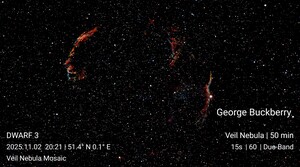
- NGC281 Pacman Nebula
- 710 stacked images in total at 15S exp, Gain60 and a Duo Band filter used. The image consists of three image data sets Mega Stacked.

Congratulations to Honor
Congratulations to member Honor Wheeler for her image below of the Lunar Eclipse taken on the 7th September 2025 being published in the British Astronomical Association (BAA) Lunar section circular and at the BAA meeting sky notes.
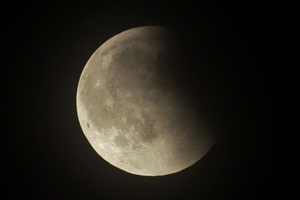
Info: Canon M6II, 18-400mm lens, ISO1000, F6.3 and 1/500sec.
The Moon – 10th June 2025
A small collection of lovely photos taken by members of the Moon on the 10th June 2025.

Moon rising by John Howarth taken from Bexley.

Moon rising by Jim Burchell taken from Dartford

The Moon by Honor Wheeler taken from North Norfolk.
The Moon – April 2025
Below are a super selection of images by CMHASD members of our Moon between the 2nd and 8th April 2025.
The Moon – April 8th 2025 by Neil Webster
Waxing Gibbous at 82% illuminated.
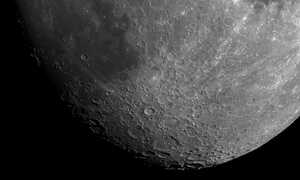






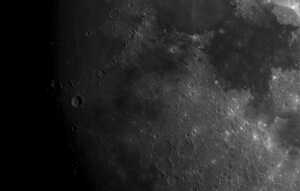
Check out Neil’s flickr page at https://www.flickr.com/photos/137388222@N05/
The Moon – 6th April 2025 by Neil Webster
Waxing Gibbous at 64% illuminated.






Check out Neil’s flickr page at https://www.flickr.com/photos/137388222@N05/
The Moon – 5th April 2025 by Diane Clarke
First Quarter at 54% illuminated.

Diane took her image using a Seestar S50 smartscope
The Moon – 2nd April 2025 by Simon Dawes
Waxing Crescent at 22% illuminated.


Details of how Simon took his images are on the photos.
Total Lunar Eclipse from Arizona, USA – 14th March 2025
Member Richard Bohner who lives in Arizona, USA took these two lovely photos of the Total Lunar Eclipse on the 14th March 2025.


Partial Lunar Eclipse – 14th March 2025
On March 14, 2025, a total lunar eclipse, visible as a partial eclipse in the UK occurred during the early morning hours. Below are a selection of images that members took of the event from the UK.
By Jim Burchell



By Jo Southgate using an iPhone

And by CMHASD trustee Keith Rickard using a camera phone


Moon Craters by Simon Dawes – 9th March 2025
Three fab images of the Moon’s craters taken by CMHASD trustee Simon Dawes on the 9th March 2025 from Bexley, Kent. Details of how Simon took the images are on each photo.



Sun, Moon, Mercury, Venus, Mars and Jupiter by Honor Wheeler – 1st March 2025
NEVER LOOK AT THE SUN DIRECTLY. Please click here for solar observing safely.
A superb selection of astro images taken by member Honor Wheeler on the 1st March 2025 of the Sun, Moon and the planetary parade.
Details of how Honor took her images are written above each image.
Venus phase – Canon M6II with Tamron 18-400mm lens, ISO400, f6.3, 1/16000sec.
Even when Venus is a fine crescent, the albedo of Venus is still high.

Sunset Sunspots – Canon M6II with Tamron 18-400mm lens. ISO100, f29, 1/16000sec.

Sunset – Canon M6II with Tamron 18-400mm lens. ISO200, f10, 1/800sec

Mars, Jupiter, Venus, Moon and Mercury – Canon M6II with Tamron 18-400mm lens. ISO500, 1/2sec taken using Samyang 8mm fish-eye lens.

Venus, Earthshine and Mercury – Canon M6II with Tamron 18-400mm lens. ISO640, f5.0, 1/3sec.

Earthshine – Canon M6II with Tamron 18-400mm lens. ISO640, f6.3, 1″1/3sec

Daytime Moon by Diane Clarke – 6th March 2025
A lovely image of the Moon taken by CMHASD member Diane Clarke on the 6th March 2025 in the afternoon. Diane used her Seestar S50 smartscope to take the image.

The Moon by Neil Webster – 4th March 2025
Another stunning image of the Moon taken by CMHASD member Neil Webster on Tuesday evening; 4th March 2025.
The Waxing Crescent Moon was 30.0% illuminated and 4.84 days old.

Neil acquired the image using an AA 115mm Apo, EQ6 R, ZWO ASI 290MM, and a Astronomik R/IR filter. 3 frames stitched in Microsoft ICE. Each 90s x 33fps (20% selected)



Processed using Firecapture, AutoStakkert, and PhotoShop.
Other Images
Sun | Comets | Mercury | Venus | Atmospheric Optics | Meteors | Auroa and NLC | Moon | Minor Planets | Mars | Jupiter | Saturn | Uranus | Neptune | Messier | Caldwell | All Deep Sky | Conjunctions | Transits | Solar Eclipse | Lunar Eclipse | Wide Field |ISS & Space Junk | Exo-Planets
All images are copyright. Permission must be sought to from the image owner to the use of any of these images.

